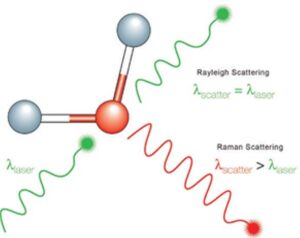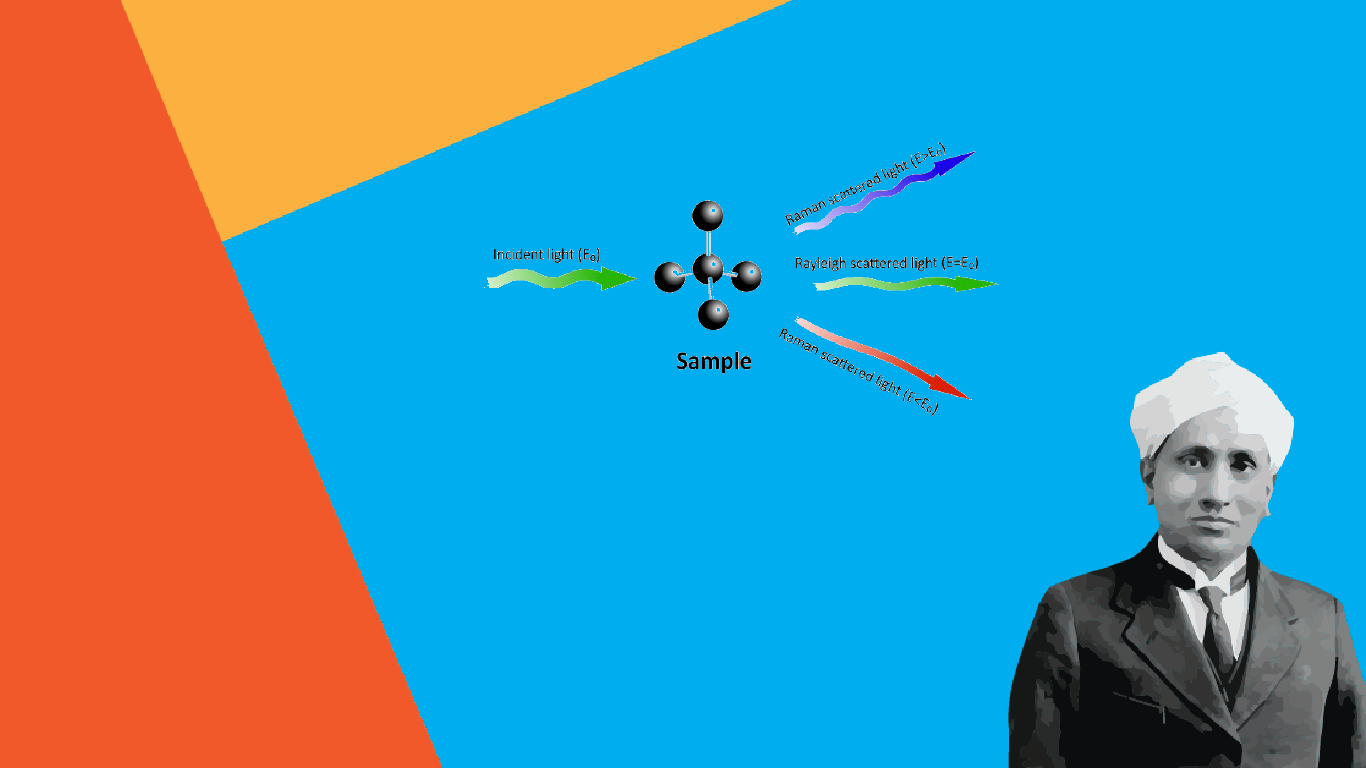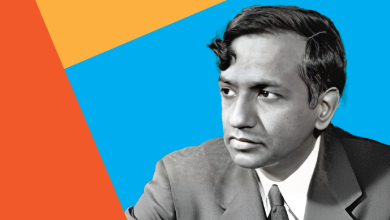C.V Raman – India’s Pride

Sir Chandrasekhara Venkata Raman was born in the year 1945 VS in Madras (Now Tamilnadu).
Raman was honored with the Nobel Prize in physics for his discovery of modified light scattering termed the “Raman effect” after his name.
Raman was a precocious child with a good understanding and knowledge at a rather young age.
He completed his secondary and higher secondary education at the ages of 11 and 13 respectively and topped the bachelor’s degree examination of the University of Madras with honors in physics from presidency college at the young age of 16.
Raman published his first research paper on “Diffraction of Light” in the year 1964 VS while he was still a graduate student.
Raman was a man of achievements.
He obtained a master’s degree in 1965 VS and joined the Indian Finance Service in Calcutta as Assistant Accountant General at age of 19.
became acquainted with the Indian Association for the Cultivation of Science (IACS), the country’s first research institute which allowed him to carry out independent research.
He made major contributions in the field of acoustics and optics.
In 1974 VS, Raman was appointed the first Palit Professor of Physics by Ashutosh Mukherjee at the Rajabazar Science College under the University of Calcutta.
The Palit Chair of Physics is a physics professorship in the University of Calcutta, India.
On his maiden trip to Europe, looking at the Mediterranean Sea prompted him to research and dig deeper into the blue color of the ocean.
In the year 1990 VS, Raman moved to Bangalore and became the first Indian director of the Indian Institute of Science.
The Raman effect was discovered in the year 1985 VS.
The day is celebrated annually in India as the National Science Day.
Raman was awarded India’s highest civilian award, the Bharat Rathna in the year 2011 VS.
Raman’s Awards
- In 1969 VS, Raman received the Curzon Research Award, while still working in the Indian Finance Service.
- In 1970 VS, he received the Woodburn Research Medal, while still working in the Indian Finance Service.
- In 1985 VS, he received the Matteucci Medal from the Accademia Nazionale delle Scienze in Rome.
- In 1987 VS, he was knighted. An approval for his inclusion in the 1929 Birthday Honours was delayed, and Lord Irwin, the Viceroy of India, conferred him a Knight Bachelor in a special ceremony at the Viceroy’s House (now Rashtrapati Bhavan) in New Delhi.
- In 1987 VS, he won the Nobel Prize in Physics “for his work on the scattering of light and for the discovery of the effect named after him.
- In 1987 VS, he received the Hughes Medal of the Royal Society.
- In 1998 VS, he was awarded the Franklin Medal by the Franklin Institute in Philadelphia.
- In 2011 VS, he was awarded the Bharat Ratna
- In 2014 VS, he was awarded the Lenin Peace Prize.
Career
Raman received his M.A. in physics from the University of Calcutta in 1964 VS.
He began his career as a lecturer at the University of Calcutta IN 1964 VS.
In 1974 VS, he became a professor at the Indian Association for the Cultivation of Science in Calcutta, where he spent the majority of his career.
It was during his time at the Indian Association for the Cultivation of Science that Raman made his most significant contributions to the field of physics.
In 1979 VS, he published a paper on the scattering of light, which described the phenomenon now known as the Raman effect.
This was a groundbreaking discovery that led to the development of new technologies such as laser spectroscopy, which is used to study the chemical composition of materials.
In addition to the Raman effect, Raman also made significant contributions to the understanding of the diffraction of light through crystals.
He developed a theory that explained how light is diffracted through a crystal lattice, and his work helped to advance the understanding of the structure of crystals.
Raman was recognized for his contributions to science with numerous awards and honors, including the Nobel Prize in Physics in 1987 VS.
He was the first Asian scientist to receive this prestigious award.
In addition to the Nobel Prize, Raman was also awarded the Hughes Medal by the Royal Society of London and the Matteucci Medal by the Italian Physical Society.
In his later years, Raman served as the director of the Indian Institute of Science in Bangalore and as the president of the Indian Science Congress.
He continued to work and make significant contributions to the field of physics until his death in 1970.
Throughout his career, C.V. Raman made significant contributions to the field of physics and his work continues to be recognized and celebrated today.
He is remembered as one of the most significant figures in the history of physics.
In 2011 VS he was awarded Bharat Rathna by the government of India.
Education
Raman was educated in Visakhapatnam and he passed matriculation at age 11.
He passed the First Examination in Arts examination (equivalent to today’s intermediate examination, pre-university course) with a scholarship at age 13 and secured the first position.
After completing his bachelor’s degree, Raman continued his studies at the University of Calcutta.
He received his M.A. in physics in 1907 in university of Calcutta.
Raman then went on to work as a lecturer at the University of Calcutta before moving on to become a professor at the Indian Association for the Cultivation of Science in Calcutta.
Raman’s education played a significant role in his later contributions to the field of physics.
He was a brilliant student who excelled in his studies and was always eager to learn more.
His strong foundation in physics, along with his curiosity and passion for research, helped him to make significant contributions to the field throughout his career.
In addition to his formal education, Raman was also an avid reader and self-taught himself on a wide range of subjects.
He was known to have a broad knowledge base and was always eager to explore new ideas and theories.
Raman’s education and passion for knowledge played a crucial role in his success as a scientist and his contributions to the field of physics.
His discoveries and theories continue to be recognized and celebrated today, and he is remembered as one of the most significant figures in the history of physics.
Early Life
Raman was born in Tiruchirapalli, Tamil Nadu, to Chandrasekhara Ramanathan Iyer and Parvathi Ammal.
Raman was the second of eight siblings and his father was a teacher at a local high school, and earned a meager ₹10 per month.
In 1949 VS, his family moved to Visakhapatnam, Vizag in Andhra Pradesh as his father was appointed to the faculty of physics at Mrs A.V. Narasimha Rao College





